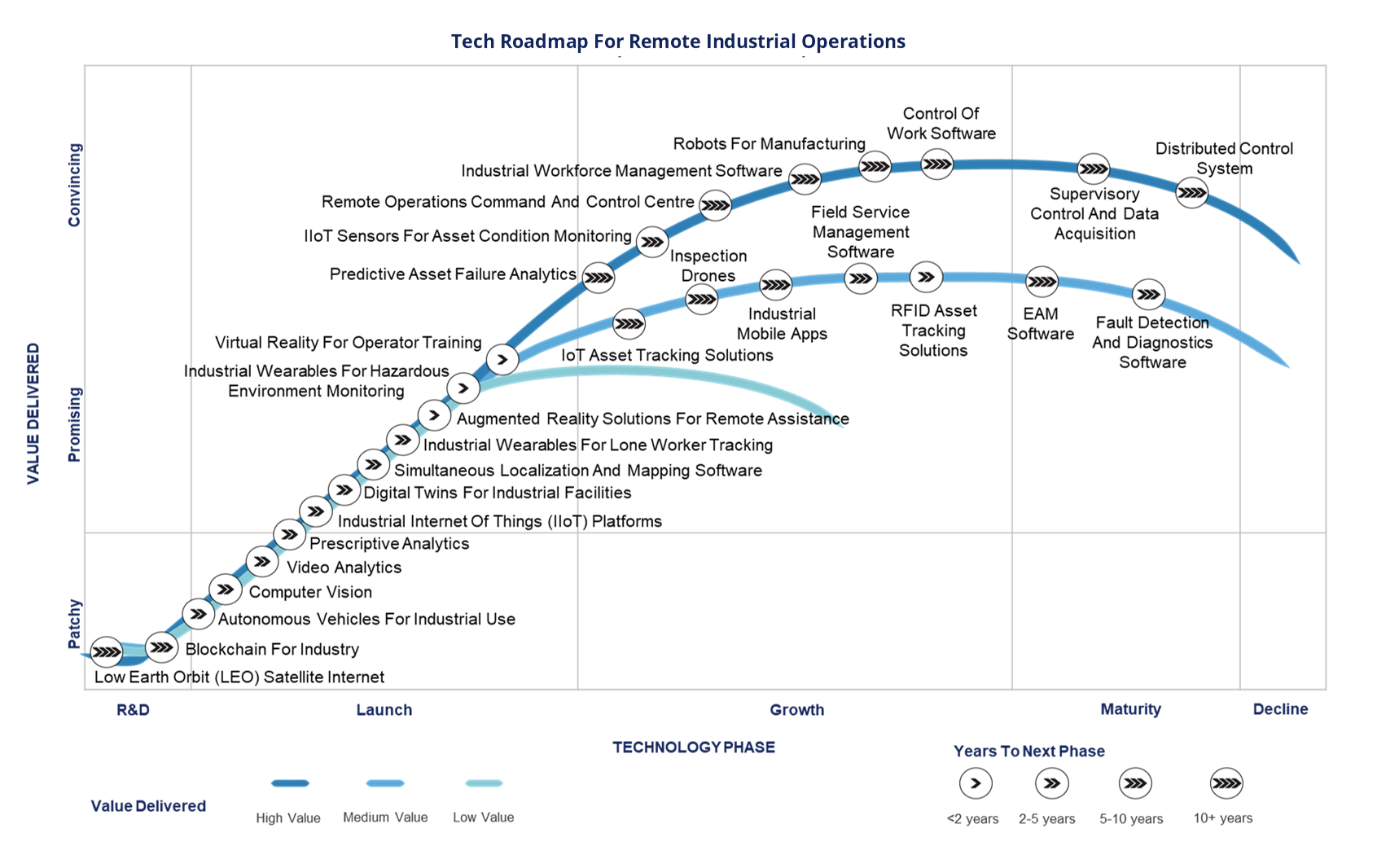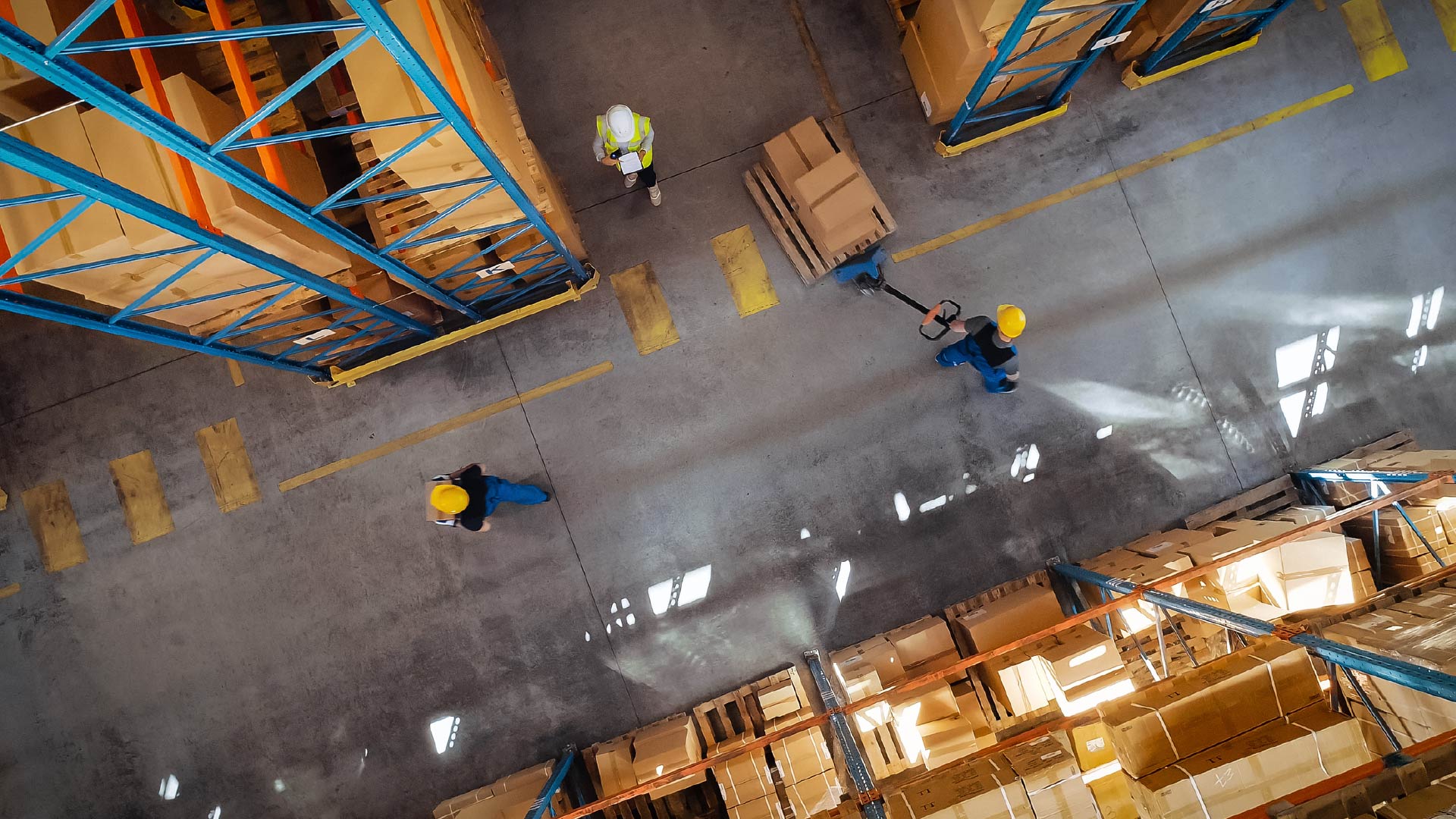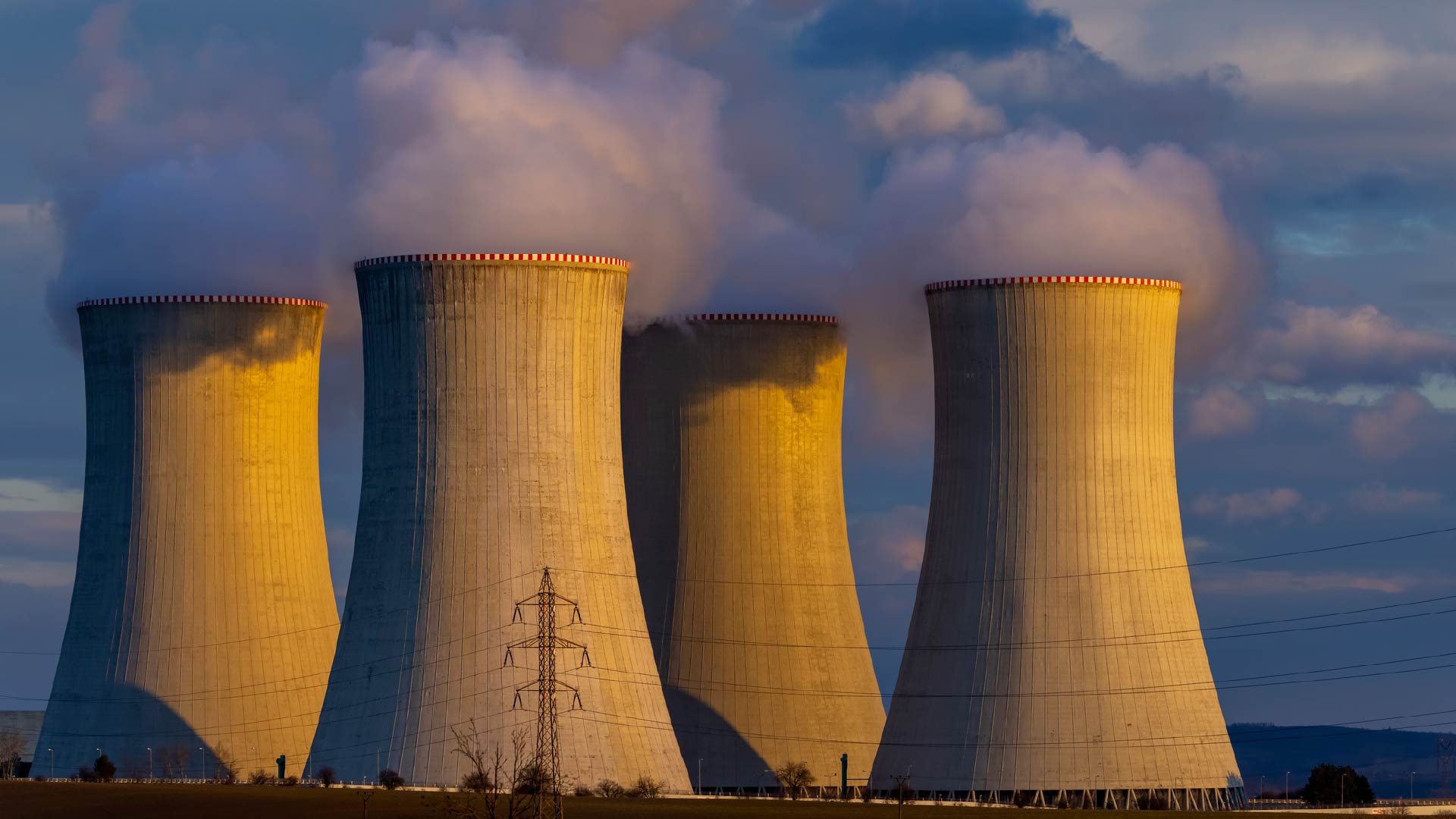Tech Roadmap For Remote Industrial Operations: Your Compass To Point You In The Right Direction

Thomas Weald
The 2022 Tech Roadmap: Technologies For Remote Industrial Operations is here! The roadmap assesses 28 different technologies that enable factories and operations to be conducted remotely. Verdantix evaluated the 28 technologies against their level of maturity (where they are in the product lifecycle), pace of innovation (when will they climb the product lifecycle), and business value delivered to firms. Enjoy three samples of content included in the report below, for more be sure to check out the full report.
Autonomous Vehicles For Industrial Use: Autonomous vehicles are used in sectors such as mining, farming, forestry, shipping and rail. They are better penetrated in certain industries such as mining as compared to others such as manufacturing or rail. For example, Sandvik is developing its Automine line of equipment, which features cabinless, autonomous subterranean vehicles. Caterpillar’s autonomous trucks have collectively hauled over 4 billion tons and traveled over 145 million kilometers. Rio Tinto has a fleet of over 130 autonomous trucks, while BHP has been using a fully autonomous fleet of trucks at its facility in Western Australia since 2017. Autonomous vehicles offer benefits such as improved worker safety, 24/7 operations and greater efficiency as well as productivity. Vendors such as EasyMile and Embark are entering the market offering software to enable traditional vehicles to retroactively become autonomous. While the use of autonomous vehicles is steadily rising, it is still not widely used across industries and the technology is in the launch phase.
Industrial Wearables For Hazardous Environment Monitoring: Environmental hazard monitoring was the top connected worker use case for 41% of respondents in the Verdantix 2021 global survey signifying a high appetite for this technology. Workers in construction, maintenance and waste management are at elevated risk from hazardous gases and hazardous environmental monitoring wearables help in keeping workers safe by providing timely alerts. The technology’s current iteration leverages available connectivity technologies, such as 4G, Bluetooth and ultra-wideband (UWB), and is likely to leverage the launch of 5G networks. The key trend is for integrating wearables with enterprise software such as EHS or EAM software to automate workflows and derive insights. SPEC Sensors offers digital gas sensor developer kits for IoT integrations, and Blackline Safety offers its G7c gas detector with IoT connectivity, fall detection and SOS features. Additionally, Guardhat offers Kyra, which is an IoT and data analytics platform designed to work with proprietary and third-party devices for location tracking, proximity sensing and environmental hazard sensing..
Control Of Work Software: CoW software provides a multitude of benefits to firms. Industrial firms use CoW software from vendors such as Alcumus, Enablon, Sphera, VelocityEHS and Yokogawa RAP to improve real-time risk management, ensure contractor safety, boost worker productivity, avoid safety related accidents and incidents, and manage COVID-19 risks for safe operations. A global pharmaceutical manufacturer reduced work permit incidents by 94% after implementing CoW software from Enablon. Similarly, Rio Tinto selected Adapt IT’s IntelliPERMIT CoW software to be used at its Gudai-Darri iron ore mine in Western Australia to improve work visibility, manage and mitigate risk, improve team productivity and ultimately improve safety performance on site.

About The Author

Thomas Weald
Analyst





